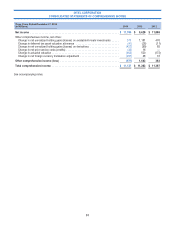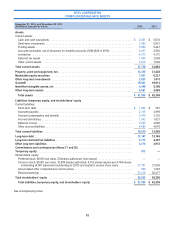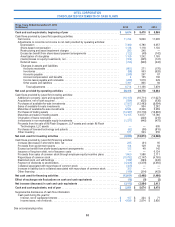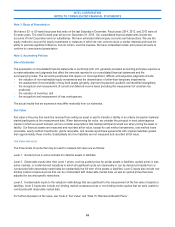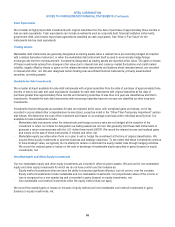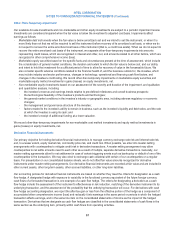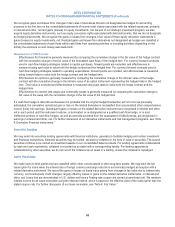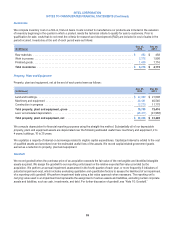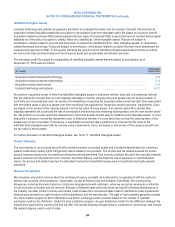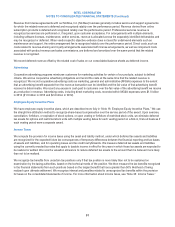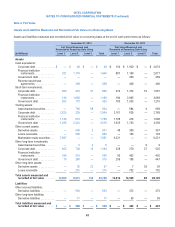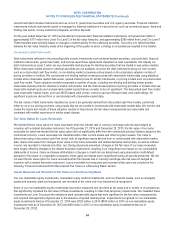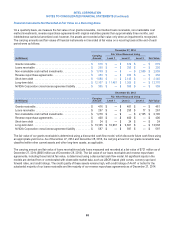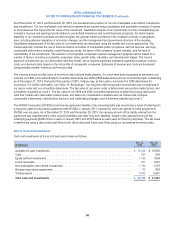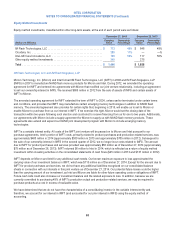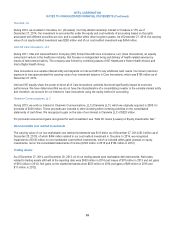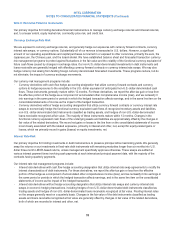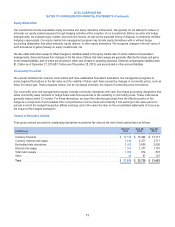Intel 2014 Annual Report Download - page 66
Download and view the complete annual report
Please find page 66 of the 2014 Intel annual report below. You can navigate through the pages in the report by either clicking on the pages listed below, or by using the keyword search tool below to find specific information within the annual report.INTEL CORPORATION
NOTES TO CONSOLIDATED FINANCIAL STATEMENTS (Continued)
Revenue from license agreements with our McAfee, Inc. (McAfee) business generally includes service and support agreements
for which the related revenue is deferred and recognized ratably over the performance period. Revenue derived from online
subscription products is deferred and recognized ratably over the performance period. Professional services revenue is
recognized as services are performed or, if required, upon customer acceptance. For arrangements with multiple elements,
including software licenses, maintenance, and/or services, revenue is allocated across the separately identified deliverables and
may be recognized or deferred. When vendor-specific objective evidence does not exist for undelivered elements such as
maintenance and support, the entire arrangement fee is recognized ratably over the performance period. Direct costs, such as
costs related to revenue-sharing and royalty arrangements associated with license arrangements, as well as component costs
associated with product revenue and sales commissions, are deferred and amortized over the same period that the related
revenue is recognized.
We record deferred revenue offset by the related cost of sales on our consolidated balance sheets as deferred income.
Advertising
Cooperative advertising programs reimburse customers for marketing activities for certain of our products, subject to defined
criteria. We accrue cooperative advertising obligations and record the costs at the same time that the related revenue is
recognized. We record cooperative advertising costs as marketing, general and administrative (MG&A) expenses to the extent
that an advertising benefit separate from the revenue transaction can be identified and the fair value of that advertising benefit
received is determinable. We record any excess in cash paid to customers over the fair value of the advertising benefit we receive
as a reduction in revenue. Advertising costs, including direct marketing costs, recorded within MG&A expenses were $1.8 billion
in 2014 ($1.9 billion in 2013 and $2.0 billion in 2012).
Employee Equity Incentive Plans
We have employee equity incentive plans, which are described more fully in “Note 18: Employee Equity Incentive Plans.” We use
the straight-line attribution method to recognize share-based compensation over the service period of the award. Upon exercise,
cancellation, forfeiture, or expiration of stock options, or upon vesting or forfeiture of restricted stock units, we eliminate deferred
tax assets for options and restricted stock units with multiple vesting dates for each vesting period on a first-in, first-out basis as if
each vesting period were a separate award.
Income Taxes
We compute the provision for income taxes using the asset and liability method, under which deferred tax assets and liabilities
are recognized for the expected future tax consequences of temporary differences between the financial reporting and tax bases
of assets and liabilities, and for operating losses and tax credit carryforwards. We measure deferred tax assets and liabilities
using the currently enacted tax rates that apply to taxable income in effect for the years in which those tax assets are expected to
be realized or settled. We record a valuation allowance to reduce deferred tax assets to the amount that it is believed more likely
than not to be realized.
We recognize tax benefits from uncertain tax positions only if that tax position is more likely than not to be sustained on
examination by the taxing authorities, based on the technical merits of the position. We then measure the tax benefits recognized
in the financial statements from such positions based on the largest benefit that has a greater than 50% likelihood of being
realized upon ultimate settlement. We recognize interest and penalties related to unrecognized tax benefits within the provision
for taxes on the consolidated statements of income. For more information about income taxes, see “Note 23: Income Taxes.”
61


